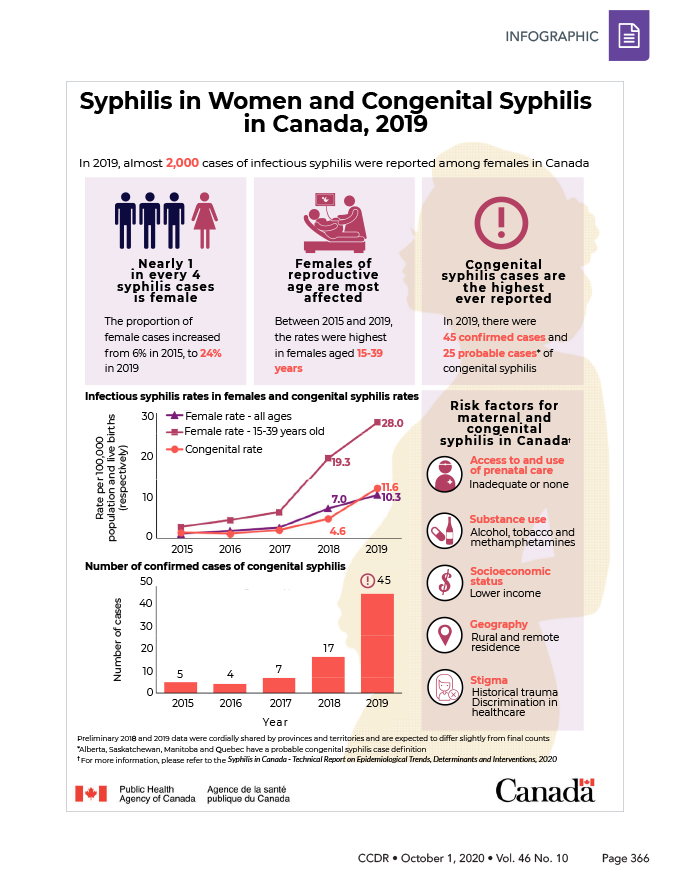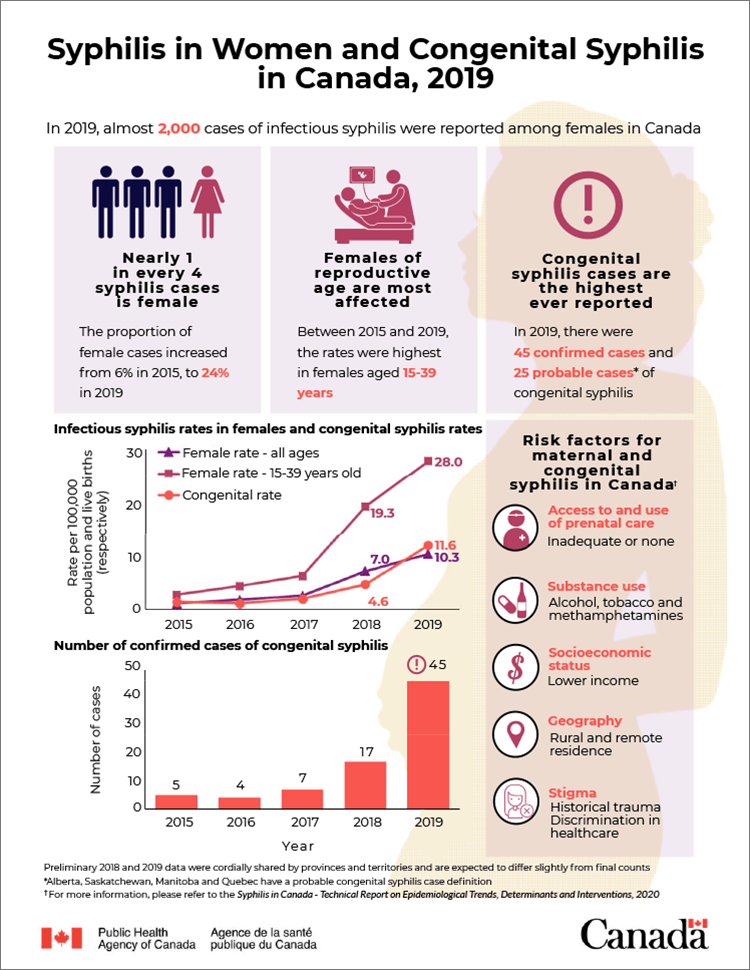Women and syphilis, 2015 to 2019

 Download this article as a PDF
Download this article as a PDFPublished by: The Public Health Agency of Canada
Issue: Volume 46–10: Laboratory Biosafety
Date published: October 1, 2020
ISSN: 1481-8531
Submit a manuscript
About CCDR
Browse
Volume 46–10, October 1, 2020: Laboratory Biosafety
Infographic
Syphilis in Women and Congenital Syphilis in Canada, 2019

Text description: Infographic
In 2019, almost 2000 cases of infectious syphilis were reported among females in Canada.
Nearly one in every four syphilis cases is female
- The proportion of female cases increased from 6% in 2015, to 24% in 2019
Females of reproductive age are most affected
- From 2015 to 2019, the rates were highest in females aged 15–39 years
Congenital syphilis counts are the highest ever reported
- In 2019, there were 45 confirmed cases and 25 probable casesFootnote * of congenital syphilis
Infectious syphilis rates in females and congenital syphilis rates (line chart)
- This line chart displays on the vertical axis the rate of infectious syphilis in females (per 100,000 population) and the congenital syphilis rate (per 100,000 live births) in Canada. The calendar years for 2015 to 2019 are shown on the horizontal axis. Three lines are presented, showing the difference between the infectious syphilis rate in female – all ages, in females – 15–39 years old and the congenital rate of syphilis, from 2015 to 2019.
| Year | Female rate – all ages | Female rate – 15–39 years old | Congenital rate |
|---|---|---|---|
| 2015 | 1.0 | 2.6 | 1.3 |
| 2016 | 1.7 | 4.2 | 1.0 |
| 2017 | 2.4 | 6.1 | 1.9 |
| 2018 | 7.0 | 19.3 | 4.6 |
| 2019 | 10.3 | 28.0 | 11.6 |
Number of confirmed cases of congenital syphilis (bar chart)
- This bar chart displays the number of confirmed cases of congenital syphilis along the vertical axis reported in Canada. The calendar years for 2015 to 2019 are shown on the horizontal axis.
| Year | Number of congenital syphilis cases |
|---|---|
| 2015 | 5 |
| 2016 | 4 |
| 2017 | 7 |
| 2018 | 17 |
| 2019 | 45 |
Risk factors for maternal and congenital syphilis in CanadaFootnote †
Access to and use of prenatal care
- Inadequate or none
Substance use
- Alcohol, tobacco and methamphetamines
Socioeconomic status
- Lower income
Geography
- Rural and remote residence
Stigma
- Historical trauma
- Discrimination in healthcare
Preliminary 2018 and 2019 data were cordially shared by provinces and territories and are expected to differ slightly from final counts.
